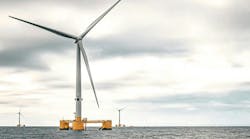A relatively small percentage of US businesses are aware of the extensive and very serious laws and regulations that apply to exports from the US. These laws and regulations apply to items leaving the US regardless of destination country or means of transportation. They cover everything from data transmissions to physical exports to re-export from one country to another. The laws even apply to activities in the US that are deemed to be exports to the country of citizenship of foreign nationals such as employees, vendors, partners, and customers. Liability is possible in the event of a merger or acquisition with a company that is not in compliance with these laws. These are particularly important to the offshore oil and gas industry because many of the products, technical information, and foreign nationals working for US companies are subject to controls for export purposes.
Risks of non-compliance
Fines and penalties for violations of these laws and regulations can be significant. Civil penalties of $50,000 to $500,000 per violation are possible. Due to the structure of these laws, it is almost certain that a single unlawful export transaction can result in multiple violations. There are also criminal penalties. These can be applied both to the company and to the individuals involved. Additionally, financial reporting laws also may create exposure for unreported non-compliance by regulated companies. Perhaps the greatest potential impact of a violation will be the business disruption resulting from government seizure of critical equipment, or an investigation and consequent possible loss of customer confidence. A good understanding of US export controls combined with a robust compliance program are essential for US businesses operating in time critical and high stakes environments.
The US export control laws are some of the federal government’s best kept secrets. Do you know, for instance, that sending a downhole tool from Houston for use on a rig in Mexican waters is an export that may require an export license even if the tool is a rental that will be in the control of its owner and will never touch Mexican soil? You may need a license from the US government before an engineer in Houston, who is a citizen of the UK, reviews the technical specifications of that same tool. Did you know that certain tools and equipment that contain certain types of sensors, accelerometers, or gyroscopes, may be considered munitions that require an export license from the State Department? Did you know that the countries of registration of a ship, as well as the country of citizenship of its captain and charterer, are necessary pieces of information to determine whether placing your tools and equipment on that ship may require an export license? These questions touch on just a few of the areas impacted by US export control laws.
Enforcement
The US has myriad complex and arcane export laws and regulations applicable to the offshore oil and gas industry, and its activities abroad. This article briefly describes some of the regulations of the US Department of Commerce, the US Treasury - Office of Foreign Assets Control (OFAC), the State Department, and US Customs and Border Protection that are most often applicable to the industry. The Commerce Department’s regulations apply to most commercial export transactions. Treasury’s OFAC regulations enforce the US’s sanctions and embargoes. The State Department’s International Traffic in Arms Regulations (ITAR) regulates items that are considered military even if a product such as a sensor or gyroscope is being used in an E&P application. US Customs is more or less the gate keeper and is primarily charged, on the export side, with monitoring compliance with the export laws.
The US Department of Commerces, Bureau of Industry and Security (BIS) is responsible for the Export Administration Regulations (EAR). Most of the goods or items in the US are covered by the EAR. US origin goods or items outside of the US also may be covered. As a safe and simplistic rule, if something is in the US, was made here, or was made as the direct application of US technical information or equipment, then the item is probably subject to the EAR.
To determine obligations under the EAR, consider the following points:
- Whether an item, technology, or software is specifically described in the EAR
- Where the item will be going
- Who it will be delivered to
- What will they do with it?
Also, depending on the type of item, technology, or software, the deemed export rule may require that a license is obtained before a foreign national here in the US can lawfully have access to or discuss controlled technical data.
Commerce control list and ECCNs
The EAR includes a section called the Commerce Control List (CCL) that describes 10 broad categories of commodities. The items on the CCL are described and defined by Export Control Classification Numbers (ECCN). The ECCNs are technical descriptions used to determine whether the item is controlled or not.
If the equipment, materials, software, or technology is not described in an ECCN, then it is referred to as “EAR99.” Common commercial items in the US are EAR99 and no export license is required or “NLR.” A designation of EAR99 is not the end of the inquiry for export compliance. The following points still need to be considered: where the item is going, who will use it, and what they will use it for?
If the item is described in an ECCN, then it will give some information as to whether it will need a license. For example, items such as certain kinds of anti-friction bearings, sensors, valves, pumps, seismic equipment, or remotely operated subsea equipment, are controlled for various reasons. Depending on the reason for control, a product may not need a license for export to the North Sea, but may need a license for use in Mexican waters. If a license is required for export to a particular country, you may still be able to ship without a license if you can qualify for one of the listed license exceptions.
End-users, uses, red flags
Regardless of whether a license is required, companies with products or technology leaving the US will need to consider the ultimate end-user and the ultimate end-use. End-users of a product should be screened against the Commerce and Treasury Department’s lists before export to that end-user. The last objective is to confirm that the exporter knows the end-use. Assume, for example, that a high pressure valve does not require an export license to the UK, but the end-user is listed as a bakery. This is a red flag that should warn an exporter to ask more questions about the transaction. Items commonly used in the energy industry, particularly those in the offshore market, could easily be adapted for uses in chemical or biologic weapons production, or to aid in other prohibited activities.
Licenses and exceptions
Even if a license is required, there are exceptions allowed under the regulations. If the transaction qualifies for an exception, the item may be exported under the proper ECCN. Availability of a license exception does not mean that the product is EAR99 and does not remove the obligations to screen the end-user and confirm the end-use.
If a license is required, information about the transaction should be sent to the BIS either electronically or on a paper license application form. Any supporting documentation (such as technical information describing the products and end-use) should also be submitted with the license, typically along with a brief letter explaining the proposed transaction. BIS then will review the application and grant it, deny it, or return it without action for one of several possible reasons.
Once the license is issued, it will have a number to reference in the Shipper’s Export Declaration (SED). The SED contains the basic information about the export that will be reviewed by Customs. The EAR also requires that the export documents (bill of lading, air waybill, etc.) include a statement for all exports of items not classified as EAR99 that these commodities, technology, or software were exported from the US in accordance with the Export Administration Regulations. Diversion contrary to US law is prohibited. Failure to properly complete the SED, AES, or to include the destination control statement could result in fines and delays in shipping.
Deemed exports
The EAR specifies that any release of technology or source code subject to the EAR to a foreign national is deemed to be an export to the home country of the foreign national. This applies not only to foreign national employees, but to vendors, contractors, customers, and employees of partners as well. Basically, this means that if information about a product or process is controlled by the EAR, it will need a license before it can be presented to or discussed with a foreign national, whether in the US or abroad.
The good news is that this rule only applies to technology that is controlled for export purposes. It does not apply to publicly available information or to foreign nationals who have received lawful permanent resident status (i.e., green card holders). Also, technology and technical data are controlled for various reasons that are country-specific. Review the ECCN that controls the technology and then check the country chart in the EAR to determine whether it will need a license for a foreign national from a particular country.
Other rules and regulations
There are many other significant rules and regulations governing the export of goods, software, and technology from the US, including rules concerning unlawful boycotts, limiting re-exports from abroad of US origin items, and regulating brokers and agents activities in connection with international trade.
A strong and effective export compliance program will not only save the expense of fines, penalties, and legal fees, it can also serve to reassure customers that there will be no regulatory impediments to goods and services being delivered on time.
Editor’s Note:For sake of brevity and clarity, some generalizations and simplifications are made in this discussion, and citations to laws and regulations are not included.
The following are examples of items that are described under various Export Control Classification Numbers (ECCN’s) that may require an export license:
- Certain stainless valves, piping, tanks, and vessels
- Valves of 5 mm (0.2 in.) or more with bellows seals made from or lined with aluminum, nickel, or alloys
- Radioactive materials (specifically including tritium, uranium, and alpha emitting radionuclides)
- Crude oil
- Hydraulic fluids containing synthetic hydrocarbon oils
- Piping, fittings, and valves made or lined with stainless or copper nickel alloys
- Portable electric generators and parts
- Robots
- Pressure transducers
- Vacuum pumps
- Toxic gas monitoring systems
- Equipment capable of drilling holes of 0.6 m (2 ft) in diameter or greater
- Electric powered pumps designed for 5 hp or more
- Laser, MIG, or E-Beam welding equipment
- Certain recording equipment
- Power converters and inverters
- High power or high voltage DC power supplies
- Certain digital and analog computers
- Radios, repeaters, amplifiers, regenerators, and other telecommunications equipment
- Information security devices and software
- Marine acoustic systems
- Optical sensors
- Underwater cameras or television cameras
- Lasers
- Magnetometers
- Gravity meters
- Pressure sensors
- Inertial navigation equipment and software
- Gyros, angular or rotational accelerometers
- GPS and GLONASS
- Navigational instruments and software
- Submersible vessels and supporting equipment
- Syntactic foam for underwater use.
Jon David Ivey
Baker & Hostetler LLP




